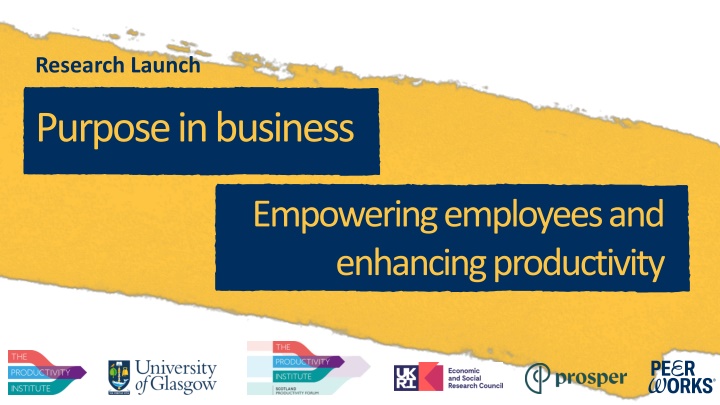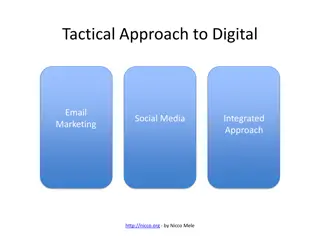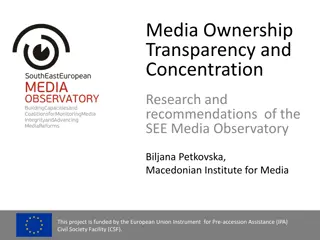
Boosting Business Productivity through Empowering Employees
Discover how purpose-driven business models can enhance productivity by empowering employees. Join us in exploring innovative ways to support employee-driven purpose for improved business outcomes.
Download Presentation

Please find below an Image/Link to download the presentation.
The content on the website is provided AS IS for your information and personal use only. It may not be sold, licensed, or shared on other websites without obtaining consent from the author. If you encounter any issues during the download, it is possible that the publisher has removed the file from their server.
You are allowed to download the files provided on this website for personal or commercial use, subject to the condition that they are used lawfully. All files are the property of their respective owners.
The content on the website is provided AS IS for your information and personal use only. It may not be sold, licensed, or shared on other websites without obtaining consent from the author.
E N D
Presentation Transcript
Research Launch Purpose in business Empowering employees and enhancing productivity
Agenda Welcome Introduction to the project Now is the Time for Purpose Purpose-led business models, productivity and meaningful work Purposeful Businesses New ways of thinking about productivity Q&A & Group discussion Close
Welcome Project and collaborators Purpose in business: empowering employees and enhancing productivity Funded by ESRC and TPI and runs from March 2024 to February 2025 Collaborative: University of Glasgow, Scotland Productivity Forum, Prosper and Peer works as well as with our stakeholder group and the business and policy communities. Aim: understand key aspects of what will empower employees in different types of business to influence or drive purpose and identify how businesses can support employee-driven purpose.
Prof Bridgette Wessels University of Glasgow The Productivity Institute Introduction to the Project
Introduction to the project There is growing interest from business and government in the potential of purpose in business to improve productivity. Although there are opportunities for business purpose to enhance productivity, there are, also several challenges, one of which is how to empower employees to drive purpose. Little is known about whether and how purpose features in both employee and business perspectives. Two aspects to the challenge: (1) understand employee perspectives about purpose, what they feel would empower them to drive purpose; and (2) identify what changes business need to undertake to support employees to drive purpose. Central Question: In what ways can businesses and employees enact purpose to enhance productivity?
Introduction to the project Subsidiary questions: In what ways can employees be empowered to drive purpose? What can businesses do to empower purpose-driven employees? Methods: interviews with employees and managers in five case study businesses, employee and manager workshops, stakeholder workshops and secondary analysis of case study data of Now is the Time for Purpose report. Confirmed business case study partners: SSE Transmission; ACS Clothing, Jerba Campervan, The Wise Group Strong collaborative and business engagement approach, our stakeholder group and the wider business and policy community.
Gareth Williams Prosper Now is the Time for Purpose
Dr Anna Clover University of Glasgow Purpose-led business models, productivity and meaningful work
Purpose-led business models, productivity and meaningful work Dr Anna Clover Research Associate Sociology Department University of Glasgow
Growing governmental, academic and practical interest in the potential for purpose-driven businesses to implement positive social and environmental change. 'Businesses have to recognise that they exist at the pleasure of society, not the other way around. They, therefore, need to be net contributors to society.' (Barclays CEO/chairman Antony Jenkins, in White et al., 2017). Requires radical re-thinking as to the purpose of businesses within society to strive beyond profit- making towards goals that centre societal and planetary welfare (Brosch, 2023). Organisations must consider how both their external actionsand internal practices are informed by a demonstrable purpose that is ethically informed (George et al., 2023). Purpose-led business models
What does purpose mean in action? Development of values and ideals that make sense for a specific organisation. Should be the touchstone for all decisions, permeate all organisational levels (White et al., 2016). Requires structuralchanges organisations must consider how key decision are made and who is included, appropriate training for managers and employeees, how actions based on purpose rather than profit are incentivised at all levels, how achieving purpose-informed goals will be recognised and measured within organisation (George et al., 2023, Villela et al., 2019, Steger, 2016, White et al., 2016) . Purpose in action
Benefits: reputation of brand, greater customer satisfaction and loyalty, recruitment and retention of employees, increased productivity and wider societal and environmental benefits (Johnson et al., 2019, Steger, 2016, van Riel, 2012, von Ahsen and Gauch, 2021). Key challenge: 'Employee engagement is central in putting purpose into action' (George et al., 2023:1848). Coherency between workers and employer's views of purpose purpose must be meaningful to workers, value of workers labour to company's purpose must be clear (von Ahsen and Gauch, 2021). Benefits and challenges
Current research tends to centre on either objective (e.g. workplace structures, rules, policies) or subjective (e.g. individual's values, feelings, ambitions) contributors to workers' experiences of meaningful work (Laaser and Karlsson, 2021, Laaser, 2022). For a full picture, need to understand how objective and subjective elements interact, within both formal and informal workplace practices - 'in relation to the interplay of workplace, managerial, societal and individual relations' (Laaser and Karlsson (2021:798). How such processes interact and contribute to workers experiences of autonomy, recognition and dignity (Laaser and Bolton, 2022). Approach can strengthen alignment of employers and employees understanding of purpose-led work. Meaningful work
References: Brosch, N. 2023. Corporate purpose: from a Tower of Babel phenomenon towards construct clarity. Journal of Business Economics 93. George, G., Haas, M., McGahan, A., Schillebeeckx, S. and Tracey, P. 2023. Purpose in the For-Profit Firm: A Review and Framework for Management Research. Journal of Management 49(6). Johnson, S., Spher, M., Rowan, R., Berghoff, J., Kelley, J. and Sisodia, R. [no date]. Editor s Desk: The Potential and Promise of Purpose-Driven Organizations. American Journal of Health Promotion 33(6). Laaser, K. and Bolton, S. 2022. Absolute autonomy, respectful recognition and derived dignity: Towards a typology of meaningful work. International Journal of Management Reviews, 22(3). Laaser, K. 2022. Meaningful Work and Sociology: An Introduction to This Themed Issue. Work, Employment and Society 36(5). Laaser, K. and Karlsson, J. 2021. Towards a Sociology of Meaningful Work. Work, Employment and Society 36(5). Lyon, F., Stubbs, W., Dahlmann, F. and Edwards, M. 2024. From business as usual to sustainable purpose-driven business : Challenges facing the purpose ecosystem in the United Kingdom and Australia. Business and Society Review. Steger, M. 2016. Creating Meaning and Purpose at Work. In: The Wiley Blackwell Handbook of the Psychology of Positivity and Strengths Based Approaches at Work Individual Approaches to Positive Psychology at Work. John Wiley & Sons, Ltd. van Riel, C.B.M. 2012. The Alignment Factor. 1st ed. Routledge. Villela, M., Bulgacov, S. and Morgan, G. 2019. B Corp Certification and Its Impact on Organizations Over Time. Journal of Business Ethics 170, pp. 343 357. von Ahsen, A. and Gauch, K. 2022. Opportunities and Challenges of Purpose-Led Companies: An Empirical Study Through Expert Interviews. Corporate Reputation Review 25, pp. 198 211. White, A., Yakis-Douglas, Basak, Helanummi-Cole, H. and Ventresca, M. 2016. Purpose-Led Organization: Saint Antony Reflects on the Idea of Organizational Purpose, in Principle and Practice. Journal of Management Inquiry 26(1), pp. 101 107.
Jackie Brierton GrowBiz Purposeful Businesses
Eleonora Vanello Peer Works - Prosper New Ways of Thinking about Productivity Productivity
Total output = Labor Productivity Total input
Source: Making the Business Case for Triple Bottom Line and ESG, Jessica Glorius-Dangelo, https://designwithma.com/
Q&A Group Discussion
Questions In what ways do you think purpose-driven businesses can enhance productivity compared to traditional profit-focused models? How can businesses balance the need for profitability with the broader goals of social and environmental responsibility? What examples have you seen of successful purpose-led businesses? What made them successful? What can we learn from these examples? In your opinion, what can the Scottish government do to support and incentivise businesses to adopt purpose-driven practices?
Research Launch Purpose in business Empowering employees and enhancing productivity






















